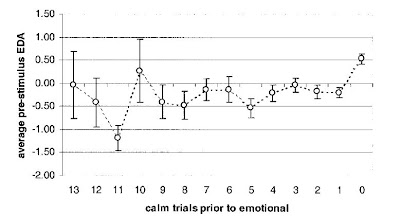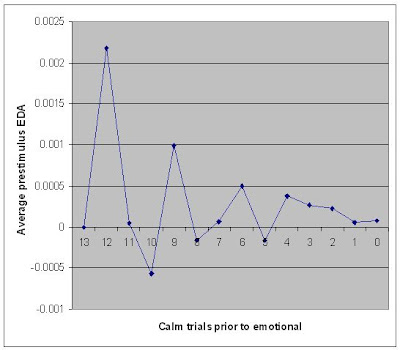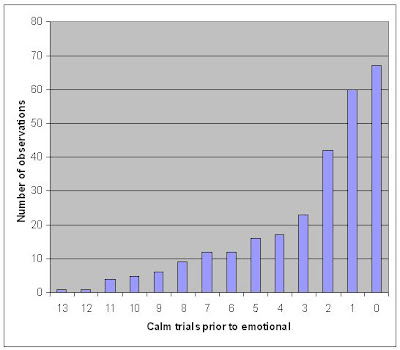More on Radin's test for the anticipation effect:

And his commentary:
Originally Posted by Dean Radin
The weighted linear correlation between mean P�SCL and trial number for steps 13 ! 1 was positive, but not significantly so (r ¼ 0.29, p ¼ 0.17). Notice that with one exception, all of the mean P�SCL values prior to the emotional trial were negative, and three were significantly negative, including the trial immediately preceding the emotional trial.
Thus, contrary to the expectations of an anticipatory strategy, a subset of participants specifically selected for exhibiting strong differential results suggestive of a genuine presentiment effect showed relaxation responses before the emotional target rather than progressive arousal.
In sum, while idealized anticipatory strategies might provide an explanation of the observed results in principle, the actual data did not indicate that such strategies were employed.
OK, so I do the same test with my simulation - 1:3 ratio emotional to calm, 480 trials. Here is my graph:

Hmm! r=-.25. Using Radins methodology I have completely ruled out the anticipation effect as an explanation (even though I put it there myself). And I still get a "presentiment" effect:

So what has happened? Have the time symmetries pervading fundamental physics manifested themselves in my program?
The answer, in this humble poster's view, is almost certainly yes!
But one last graph:

Could it be the rather more boring fact that the small number of observations here cannot sort out the (individually tiny) anticipation effect from the noise?
No, it has got to be time symmetries.